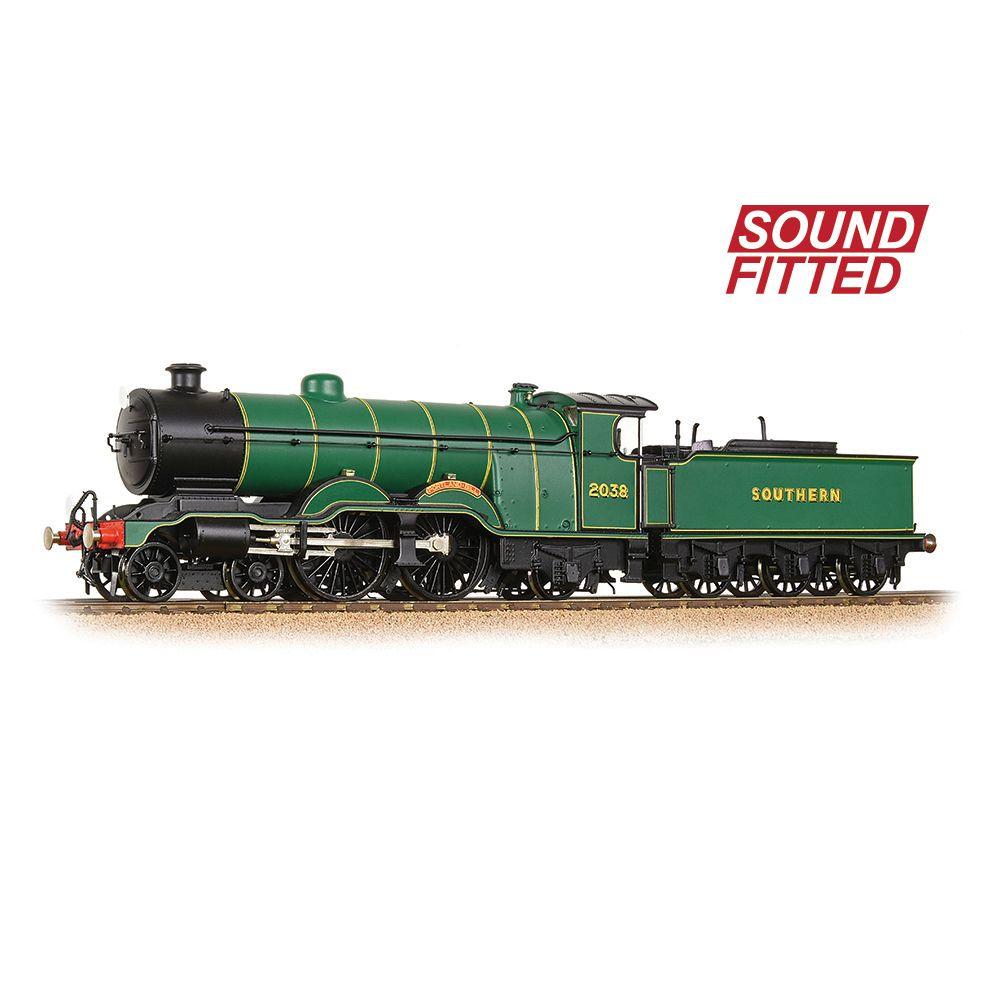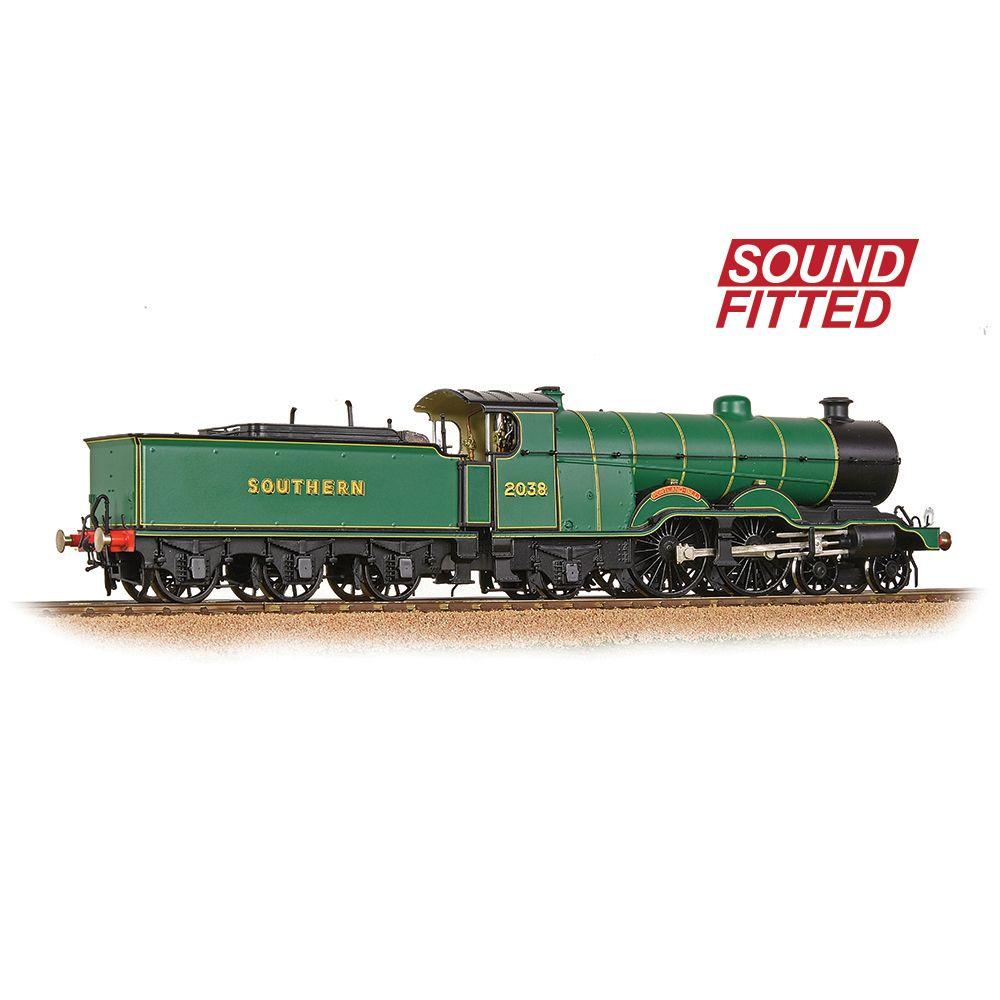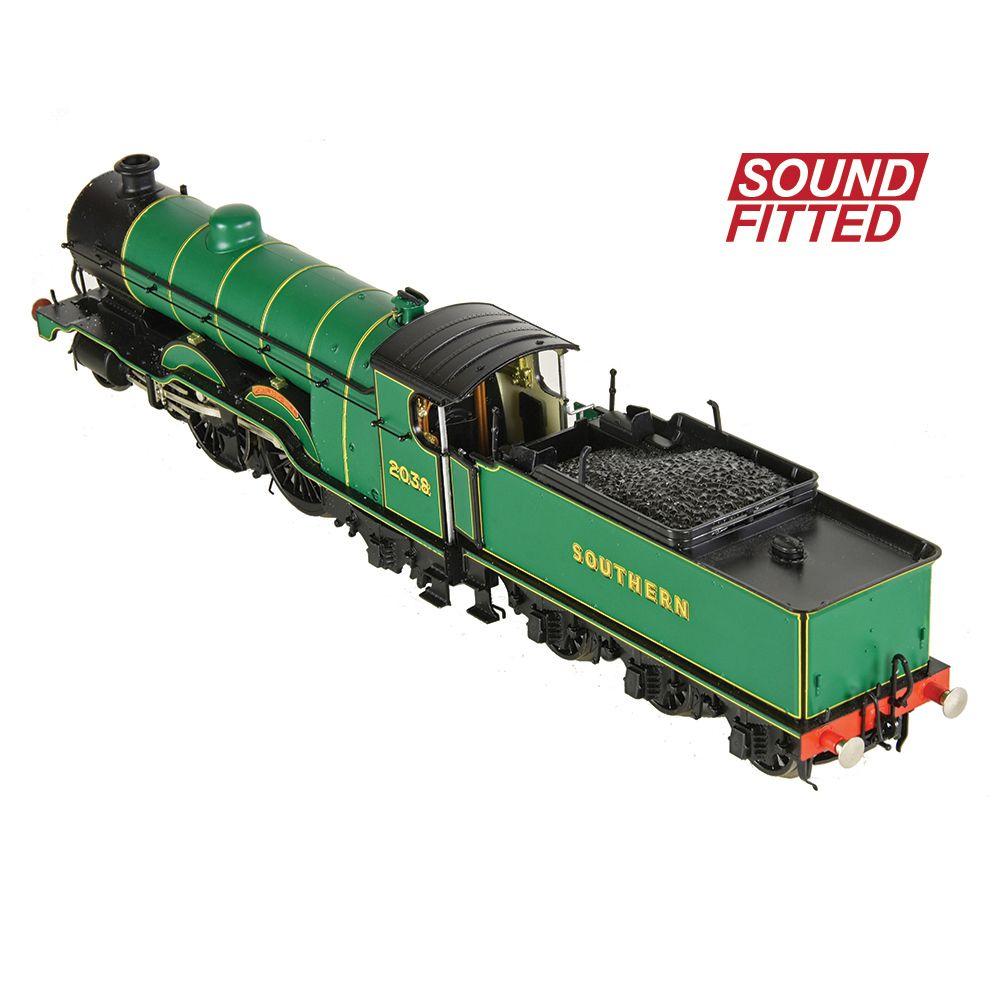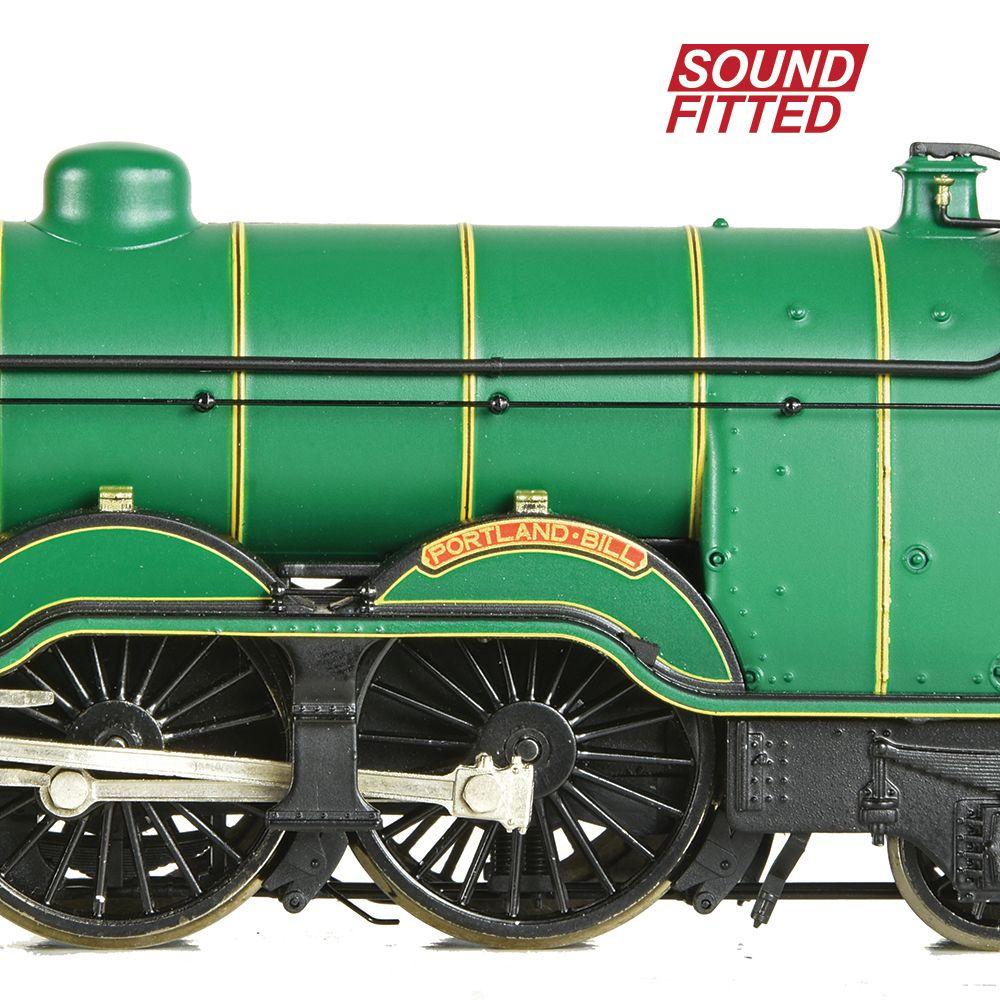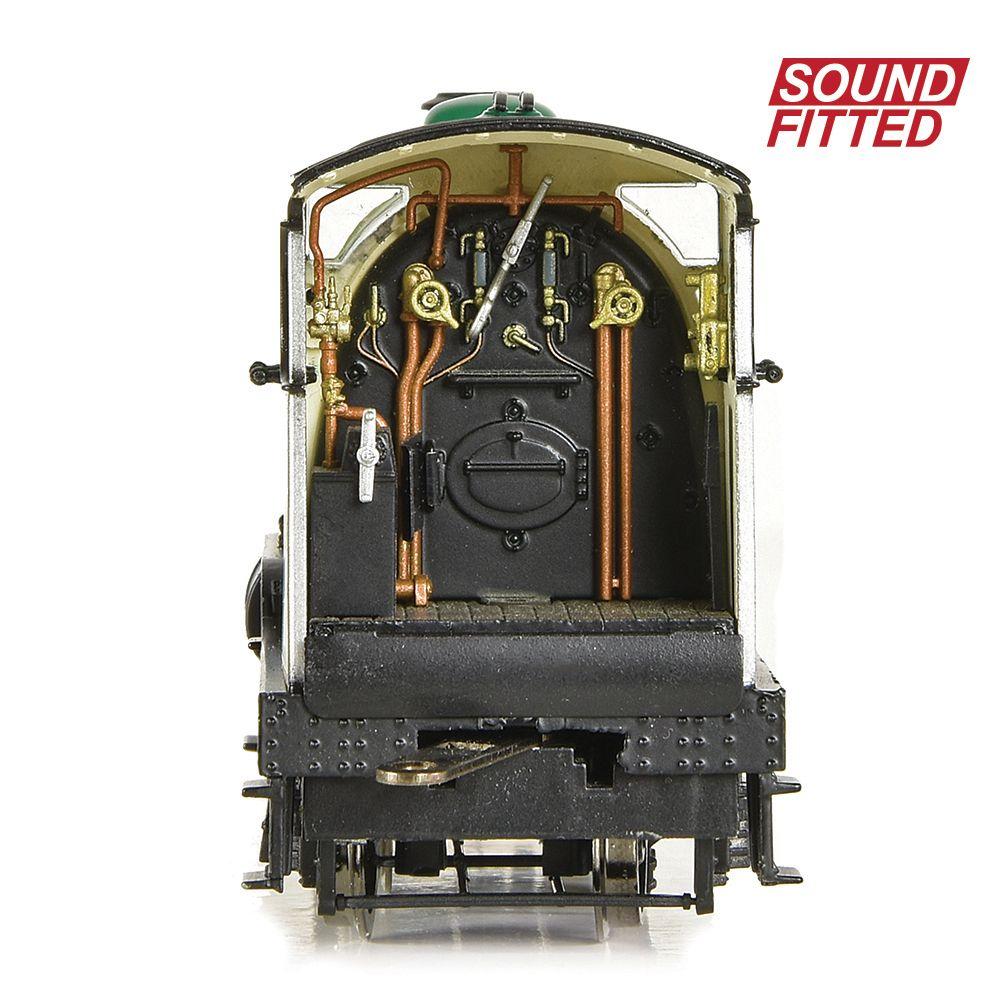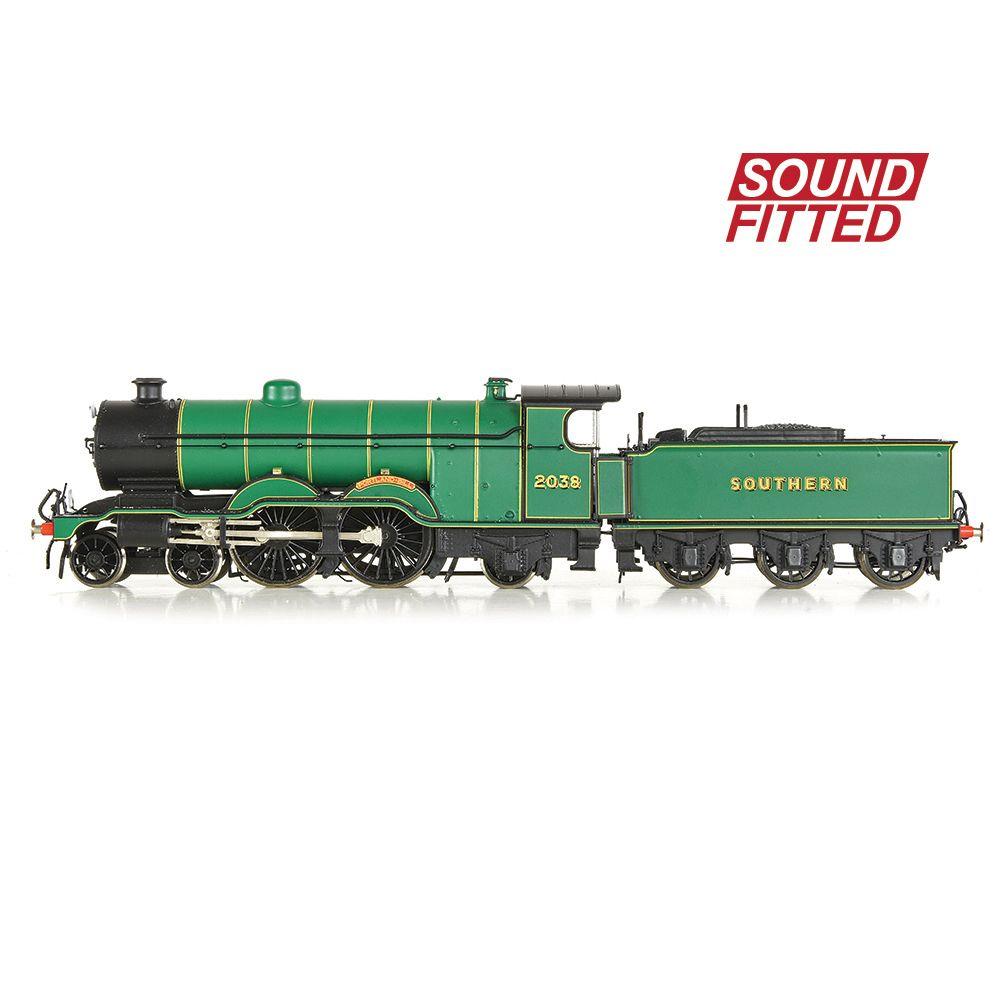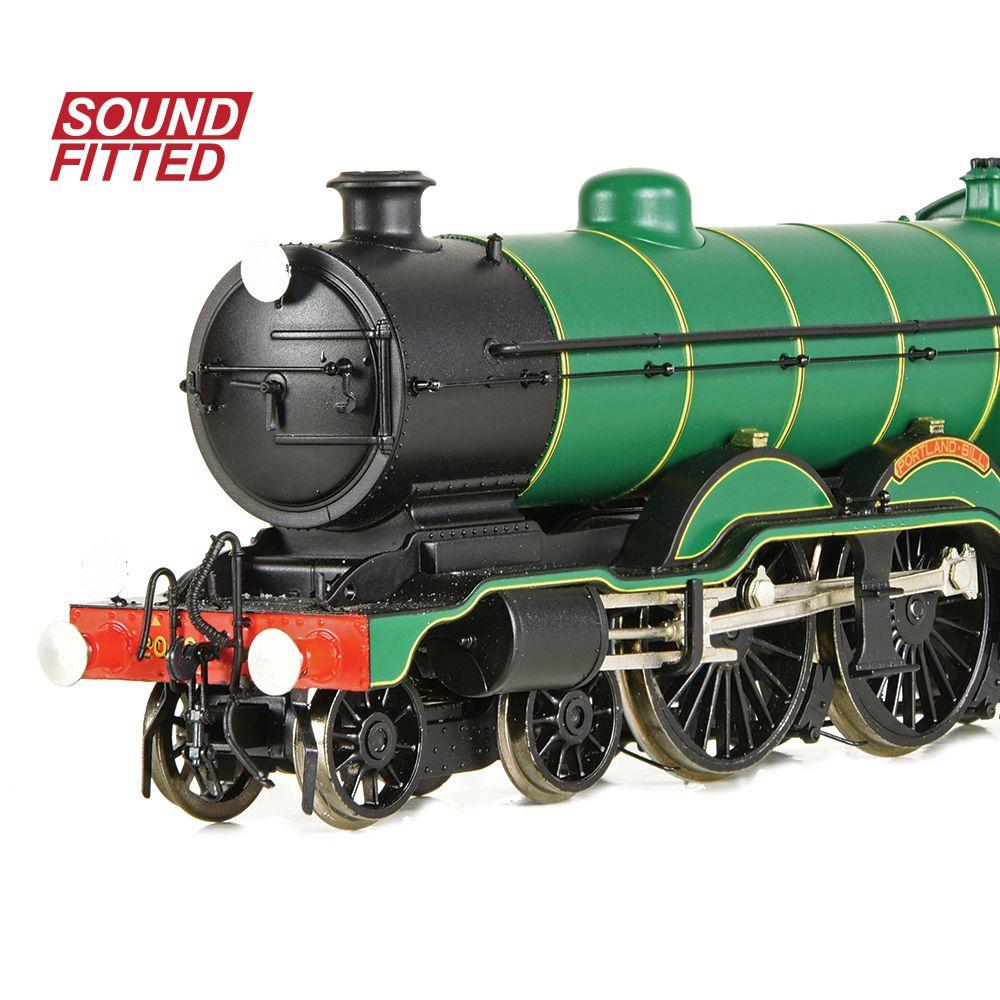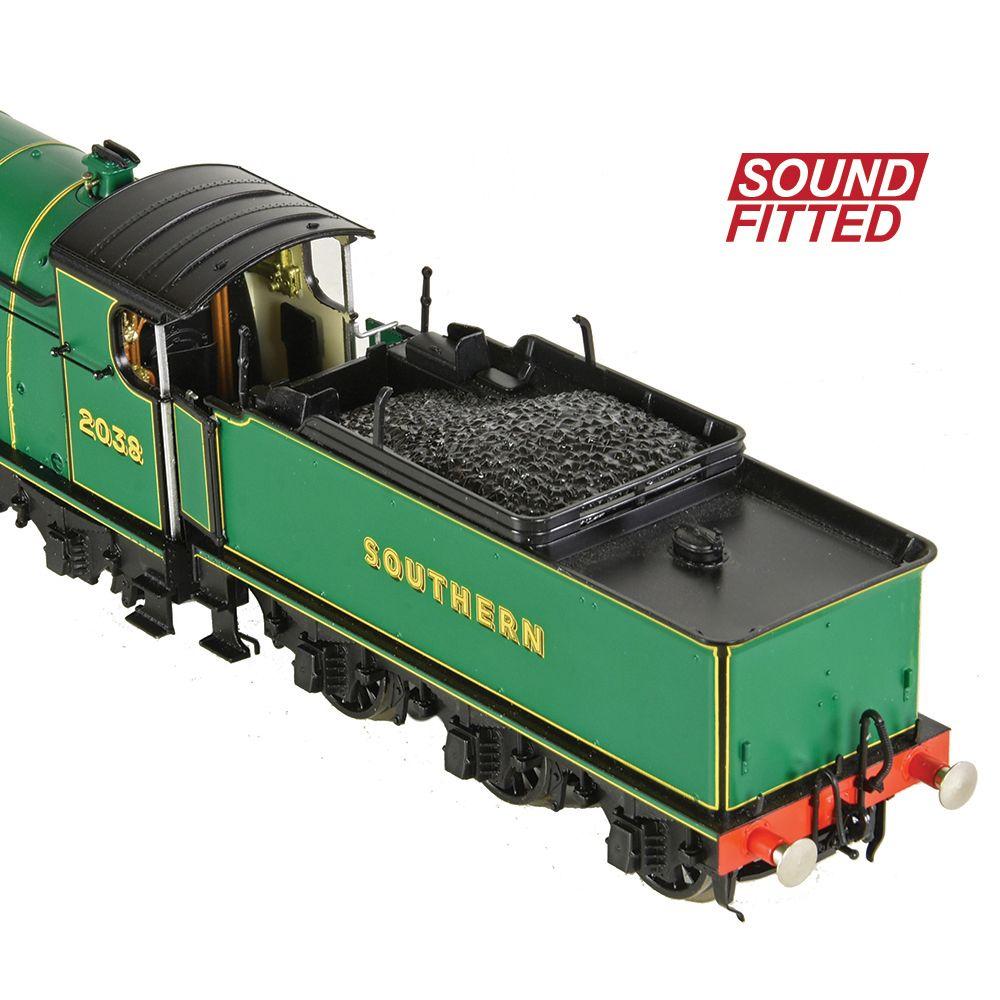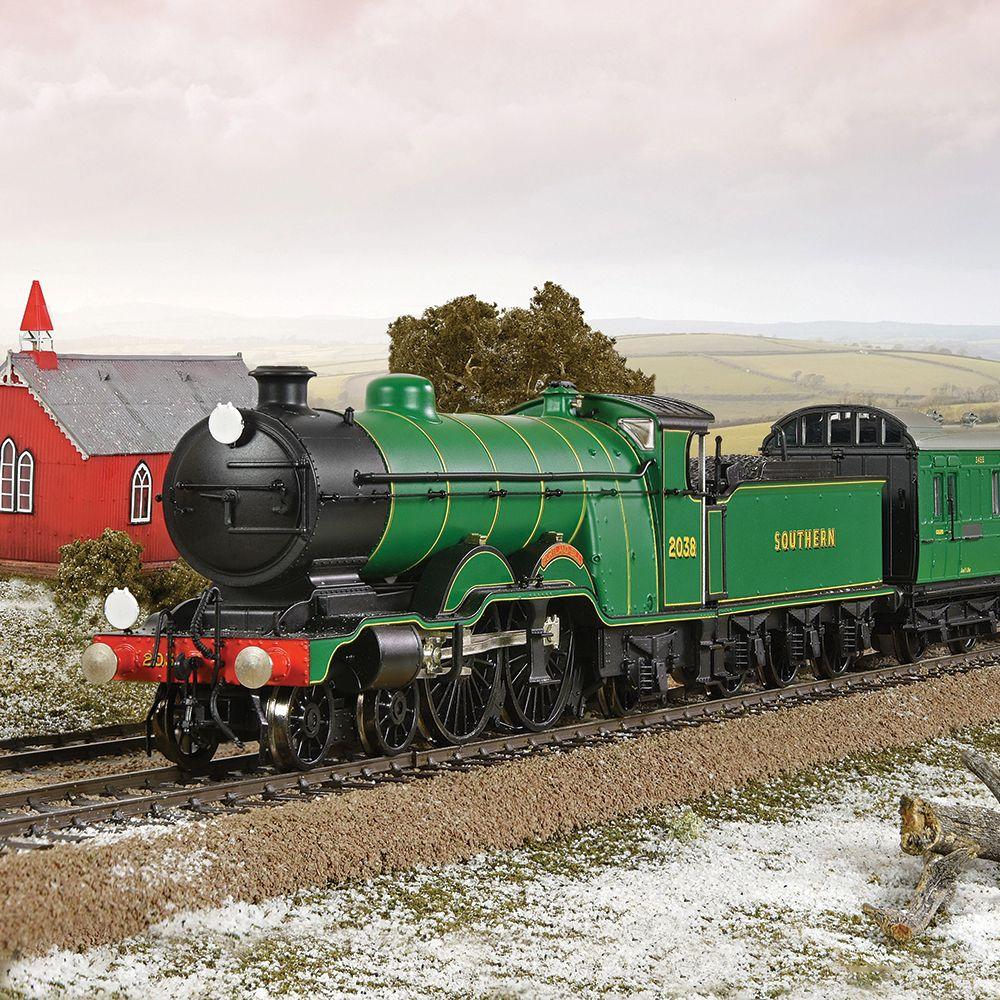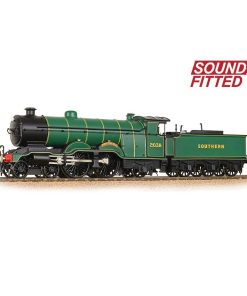BRANCHLINE OO LB&SCR H1 Atlantic 2038 ‘Portland Bill’ SR Malachite Green DCC Sound Fitted BRANCHLINE
$ 519,99 $ 156,00
BRANCHLINE OO LB&SCR H1 ATLANTIC 2038 ‘PORTLAND BILL’ SR MALACHITE GREEN (SOUND FITTED)
Announced as part of the Winter British Railway Announcements we are delighted to bring you the new LB&SCR H1 Atlantic No. 2038 ‘Portland Bill’ in SR Malachite Green livery.
This era 3 model incorporates a wealth of fine detailing, accurately capturing the features of the H1 Class and highlighted by its colourful livery. An accessory pack is supplied with the model which includes etched nameplates, vacuum pipes, Screw-link couplings, route indicator discs and cab doors.
The SOUND FITTED model features realistic braking sounds, drain cocks and whistles; whilst a function for normal or heavy load has also been included, see full details of the sound functions below.
MODEL FEATURES:
• Bachmann Branchline OO Scale
• Era 3
• Pristine SR Malachite Green livery
• Accessory Pack – including ‘Portland Bill’ etched nameplates
• NEM Coupling Pockets
• Tender Pickups
• SOUND FITTED – See below for function list
• Length 260mm (over couplings)
SOUNDS
F1 – Sound (On / Off)
F2 – Brake (Non-Latching)
F3 – Cylinder Drain Cocks
F4 – Single Whistle (Speed Related)
F5 – Reverser
F6 – Shovelling Coal
F7 – Injectors
8F – Blower
9F – Flange Squeal (Speed Related)
F10 – Safety Valve
F11 – Detonators
F12 – Water Tank Filling
F13 – Coupling Clank
F14 – Light Engine Mode
F15 – Fade All Sounds
F16 – Guard’s Whistle
F17 – Auto Wagon Buffering
F18 – Unfitted Freight Mode
F19 – Pinned Brakes
F20 -Hand Brake
F21 – Short ‘Toot-toot’
F22 – Medium Duration Swell Whistle
F23 – Long Duration ‘Played’ Whistle
F24 – ‘Clear from the Guard’
F25 – ‘Going Under, Charlie’
F26 – Guard to Driver Instructions
F27 – Volume Down
F28 – Volume Up
Analogue Users: Please note that exhaust and motion, automatic and randomised sounds will also operate when this model is used on analogue control (DC) straight from the box!
LB&SCR H1 HISTORY
When D. E. Marsh left the Great Northern Railway to take office with the London Brighton & South Coast Railway (LB&SCR), there was an urgent need for new larger passenger locomotives to work on the London-Brighton express route. Marsh obtained a set of drawings for H.A. Ivatt’s Atlantic from Doncaster and modified them before commissioning Kitson & Co. to build five H1 Class 4-4-2 Atlantic Locomotives. Built between 1905 and 1906 and delivered simply in grey primer, each locomotive was subject to a thousand-mile trial before they were painted in the LB&SCR’s ‘burnt umber’ livery with gold lining and numbered 37 to 41.
Initially registered as a class B5, it wasn’t until January 1907, sometime after the last of the five was received, that this classification was revised to H1. Marsh’s modifications meant that the design differed from the better-known Ivatt Atlantic’s by having a 2-inch longer piston stroke and a higher working boiler pressure, raised from 175lb to 200lb per square inch. The resulting locomotives were a little livelier as they had extra torque, which was needed to combat steep climbs away from many stations on the LB&SCR network.
The only H1 Atlantic to carry a name during the LB&SCR era was No. 39 – from June 1913 to January 1926 it carried the name ‘La France’ as it was to be used to pull a train for the French President during his second official visit. From 1925 the H1 Class was gradually replaced on London-Brighton services, however, there was still plenty of work on other routes including boat-train duties connecting the Newhaven-Dieppe ferry. It was at this time that they were all given names highlighting geographical features from the south coast.
Between 1935 and 1937 the locomotives were altered to suit the composite loading gauge but with the onset of World War Two their work dried up as cross-channel ferry services were suspended. Some locomotives were put into store whilst others found work on other duties in Southern England. Two of the five were withdrawn in 1944 and the remaining three survived long enough to see service with BR, by July 1951 the H1 Atlantic’s had all been withdrawn from service after 46 years on the rails.
Quick Shipping and Professional Packaging
Due to our long-term partnership in a long-standing partnership with UPS, FedEx, DHL and many other leading global carriers, we are able to offer an array of shipping options. Our warehouse staff are highly trained and will pack your products according to our precise and precise specifications. Your items will undergo a thorough inspection and be securely secured prior to being delivered. We ship to thousands clients each day across multiple countries. This is an indication of our dedication to being the biggest online retailer in the world. The warehouses are located in Europe as much as they are in the USA.
Note: Orders that include more than one item are assigned a processing time in accordance with the item.
Prior to shipment before shipping, we'll inspect thoroughly the items you've ordered. The majority of orders are shipped within 48 hrs. The time to deliver varies from 3-7 days.
Returns
We don't manage the stock in our warehouse and factory. Stocks are subject to change at any moment. You may not receive your order after the order has been made.
Our policy is for 30 days. If you have passed 30 days by since your purchase, unfortunately we can't offer you a refund or exchange.
The item cannot be used and in its original condition. It should also be in the original packaging.
Related products
RADIO CONTROL
RADIO CONTROL
RADIO CONTROL
RADIO CONTROL
RADIO CONTROL
RADIO CONTROL
(Clearance Item) HB RACING 44mm Heavy Duty Universal Drive Shaft/Rear/Steel/2Pcs HB RACING
RADIO CONTROL
RADIO CONTROL
RADIO CONTROL
RADIO CONTROL
RADIO CONTROL
RADIO CONTROL
